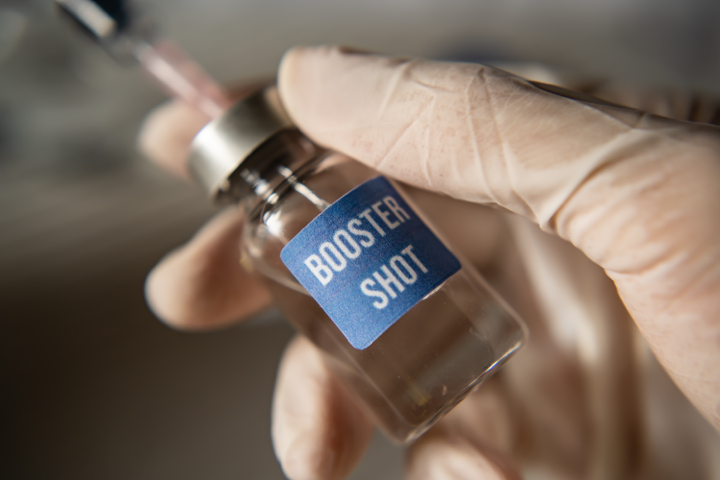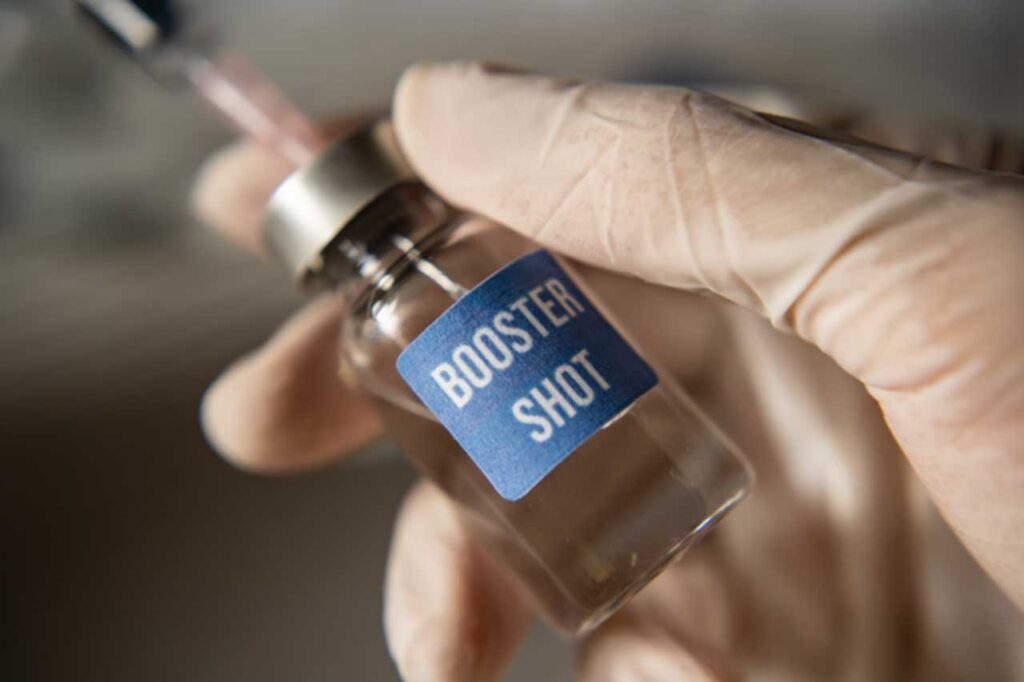
Article by Lalita Panicker, Consulting Editor, Views and Editor, Insight, Hindustan Times, New Delhi
SARS-CoV-2 keeps evolving, and it’s time for COVID-19 vaccines to again follow suit, advisers to the U.S. Food and Drug Administration (FDA) agreed early last week. The panel voted unanimously in favour of updating the shots to more closely match virus strains now circulating. www.science.org/content/article/covid-19-vaccines-should-get-fall-update-panel-concludes?utm_source=sfmc&utm_medium=email&utm_content=alert&utm_campaign=WeeklyLatestNews&et_rid=785235729&et_cid=5240384
Although the FDA still needs to greenlight the change, the next iteration of vaccine is likely to match one of two versions of the virus, either JN.1, which emerged in September 2023, or one of its descendants, such as KP.2 (colloquially known as a “FLiRT” variant). Although such offshoots are now circulating more widely than JN.1, advisers urged FDA to at a minimum permit JN.1 vaccines, because the company Novavax is already working on one and says it can’t quickly pivot to something different.
A retooled vaccine, it’s hoped, will be more likely to blunt COVID-19 symptoms and the risk of hospitalization, and somewhat dent transmission of the virus compared with the current version, which is tailored to XBB.1. That strain has now vanished, and 94% of infections are attributed to the JN.1 family. In late April, the World Health Organization (WHO) asked vaccine companies to supply JN.1 vaccines globally later this year.
The advisory committee considered whether the FDA should follow WHO’s lead, embracing JN.1, or request a vaccine containing one of its progeny, some of which are now circulating much more widely than their parent. All three companies supplying COVID-19 vaccines to the United States—Moderna, Pfizer, and Novavax—said at the meeting they can have ample supply of a JN.1 vaccine available by late summer. But Novavax followed the WHO recommendation and has already settled on a JN.1 vaccine because its protein-based product requires roughly 6 months to produce, longer than messenger RNA (mRNA)-based vaccines from Moderna and Pfizer. Novavax Chief Medical Officer Robert Walker says the company could not offer a fall vaccine in the U.S. if FDA requested a different strain, such as KP.2.
Although the advisory committee’s 16-0 vote to update the vaccine was no surprise—researchers are now attuned to SARS-CoV-2’s shape shifting—unanswered questions kept bubbling up. It’s still unclear whether and to what degree young, healthy people benefit from annual COVID-19 vaccinations, whether regular boosting cuts the risk of Long Covid, and how long protection from severe disease after vaccination lasts.
Data presented at last week’s meeting by Ruth Link-Gelles, an epidemiologist at the U.S. Centers for Disease Control and Prevention (CDC) indicated protection from symptoms and hospitalization took a nosedive within 6 months of an updated XBB shot—sometimes to near zero. Earlier publications have reported a similar waning of COVID-19 vaccines. But protection against death and intensive care unit admission was much more durable.
The endless permutations in the number of vaccine doses and the number and timing of infections in the U.S. population are making it harder to resolve some questions about the shots. Still, many “are answerable, but I don’t know if people are interested in answering them by collecting the data,” says David Ho, a virologist at Columbia University who posted a preprint last month analyzing recent SARS-CoV-2 evolution and how different variants might respond to vaccination. “The pandemic is gone in most people’s minds.” That was reflected by last year’s vaccine uptake: Just 22% of adults in the U.S. got a COVID-19 vaccine, compared with 48% who rolled up their sleeves for a flu shot.
////
In a first-of-its-kind operation, a 71-year-old man with a liver tumour had the malignant lobe of the organ removed and replaced with a pig liver genetically engineered to resist rejection, his surgeons in China reported. Following the 17 May operation, he was in good health this week with no signs of infection or rejection, and the liver was producing healthy quantities of bile, says Sun Beicheng of the First Affiliated Hospital of Anhui Medical University, who led the operation. www.science.org/content/article/news-glance-tracking-clouds-reducing-fake-news-posts-and-counting-ties-big-tobacco?
A team at Yunnan Agricultural University developed the genetically modified pig. Another team in China previously reported transplanting such a liver into a patient who had been declared brain-dead. The latest procedure adds to a growing list of transplants of genetically modified pig organs, including kidneys and hearts. But a setback came last week when surgeons at NYU Langone Health had to remove an engineered pig kidney from a woman 47 days after the transplant surgery because it stopped working.
///
A little-known pathogen named the Oropouche virus is on the move in South America, alarming scientists and public health experts. Brazil has reported 5530 cases so far this year, compared with 836 in all of 2023. Bolivia, Colombia, and Peru have seen upticks as well. Although the virus has traditionally been endemic in the Amazon Basin, it is now sickening people far from the rainforest. In May, Cuba reported its first cases. www.science.org/content/article/little-known-virus-rise-south-america-could-overwhelm-health-systems
The surge has scientists concerned that the virus, transmitted primarily by biting midges, could be the next one to cause a big outbreak in Latin America, which battled major epidemics of Zika and chikungunya in the past decade and is now in the middle of one of the worst dengue epidemics ever. Most cases of Oropouche fever are mild, with symptoms such as headache, body pains, nausea, and rash—but the virus can also cause brain inflammation and neurological problems, including vertigo and lethargy. And even a mild epidemic could overwhelm the continent’s health systems.
“What worries us most is the expansion of a disease that was practically restricted to the Amazon, which has a very low-density population, to areas with greater population density,” says Marcus Lacerda, an infectious disease researcher at the Oswaldo Cruz Foundation (Fiocruz).
The strain driving the outbreak originated with a genetic change a decade ago, but the Oropouche virus was first identified in 1955 in the village of Oropouche, in Trinidad and Tobago. In 1960, it turned up in a blood sample from a sick sloth during the construction of the Belém-Brasília highway. A year later, many people in Belém fell ill with what was believed to be Oropouche fever. Most of the roughly 30 outbreaks in Latin America since then have occurred in the Amazon Basin as well. In the forest, the virus circulates among primates, sloths, and birds; it’s unclear which insect spreads it there. In urban settings, the pinhead-size midge Culicoides paraensis transmits the disease between humans.
The first cases in the current outbreak were detected in Roraima, a state in northern Brazil, at the end of 2022. Since then, the disease has emerged along Brazil’s populous East Coast, including the states of Rio de Janeiro, Santa Catarina, Bahia, and Minas Gerais. Some patients had traveled in the Amazonian region, but others had not, meaning the virus is now circulating locally. The numbers are likely to be underestimates: Oropouche’s symptoms resemble those of dengue, Zika, and several other diseases, and an infection can only be confirmed using polymerase chain reaction or antibody tests.
For the few scientists who study Oropouche fever, none of this was a big surprise. Since 2000, the virus has increasingly ventured outside its endemic region, says virologist Socorro Azevedo at the Evandro Chagas Institute, a research center for tropical diseases in the Brazilian Amazon. “What we are seeing is a chronicle of a tragedy foretold,” she says.
Oropouche fever is not known to have killed anyone, but a few suspected fatalities are under investigation, says Fiocruz virologist Felipe Naveca. “As the number of infected people increases, so does the chance that we will discover unexpected impacts,” says Naveca, who notes that Zika, a disease that seemed relatively innocuous at first, led to a wave of babies born with an underdeveloped brain from women infected with the virus. The Oropouche virus can also infect the brain, he points out.
Controlling Oropouche is a challenge. C. paraensis is “a neglected vector for a neglected disease,” says Joaquim Pinto Nunes Neto, an entomologist at Evandro Chagas. “No one has cared about studying how to control it.” The tiny midges easily pass through the mesh of mosquito nets, and common insect repellents may not work, Nunes Neto says. What may help is eliminating food waste and dead leaves that attract the insects and draining water reservoirs where females lay their eggs.
How much farther the disease could spread is unclear. C. paraensis has been found all the way from the United States to northern Argentina, but not every place has the right conditions for Oropouche’s spread. A model published in 2023 by Romero-Álvarez that took into consideration current climate and vegetation loss suggested up 5 million people across the Americas are at risk. But the number is likely an underestimate, as the model did not predict the current disease expansion to big cities such as Rio de Janeiro and didn’t factor in future deforestation and climate change. It also didn’t account for the possibility that the common house mosquito (Culex quinquefasciatus)—and perhaps other insects—can transmit Oropouche, as some studies suggest.
Scientists worry that as the virus spreads, it could undergo genetic changes that make it more dangerous. The genomes of most insect-borne viruses consist of just one RNA segment, but the Oropouche virus has three. When two different strains infect the same cell, they can swap segments, resulting in a new and different combination of genes. Naveca, who leads a group that tracks Oropouche mutations, has traced the current outbreak to a variant that arose in Brazil in 2015 from reassortment between virus lineages from Peru and Colombia. Whether this exchange made the virus more transmissible isn’t clear, Naveca says.
/////
Meanwhile in the battle against various types of cancer:
A drug that engages the immune system completely eliminated advanced colorectal cancers in six out of ten people. Thirty two people with a particular kind of advanced colorectal cancer were given the immunotherapy pembrolizumab (Keytruda). Tumours disappeared in 59% of participants and the remaining 41% underwent surgery to remove their tumours. All participants were cancer-free after treatment, compared with around 5% of people given standard treatment with chemotherapy and surgery. “If you melt the cancer away before surgery you normally triple survival chances,” says lead investigator and oncologist Kai-Keen Shiu. “Patients also don’t need any chemotherapy after, so they avoid all those side effects.”
The Guardian | 3 min read
Reference: American Society of Clinical Oncology (ASCO) annual meeting abstract
///
A lung-cancer drug has achieved stunning success in a landmark clinical trial. The study included 296 people with advanced non-small cell lung cancer. Participants were randomised to receive either lorlatinib (Lorbrena) or standard treatment with crizotinib. After five years, 60% of the group treated with lorlatinib were alive without cancer progression, compared with 8% of people treated with the standard drug. “You don’t need a magnifying glass to see the difference,” says Julie Gralow, the chief medical officer at the American Society of Clinical Oncology. “These long-term data results are off the chart,” says David Spigel, the chief scientific officer at the Sarah Cannon Research Institute.
The Guardian | 3 min read
Reference: ASCO annual meeting abstract


